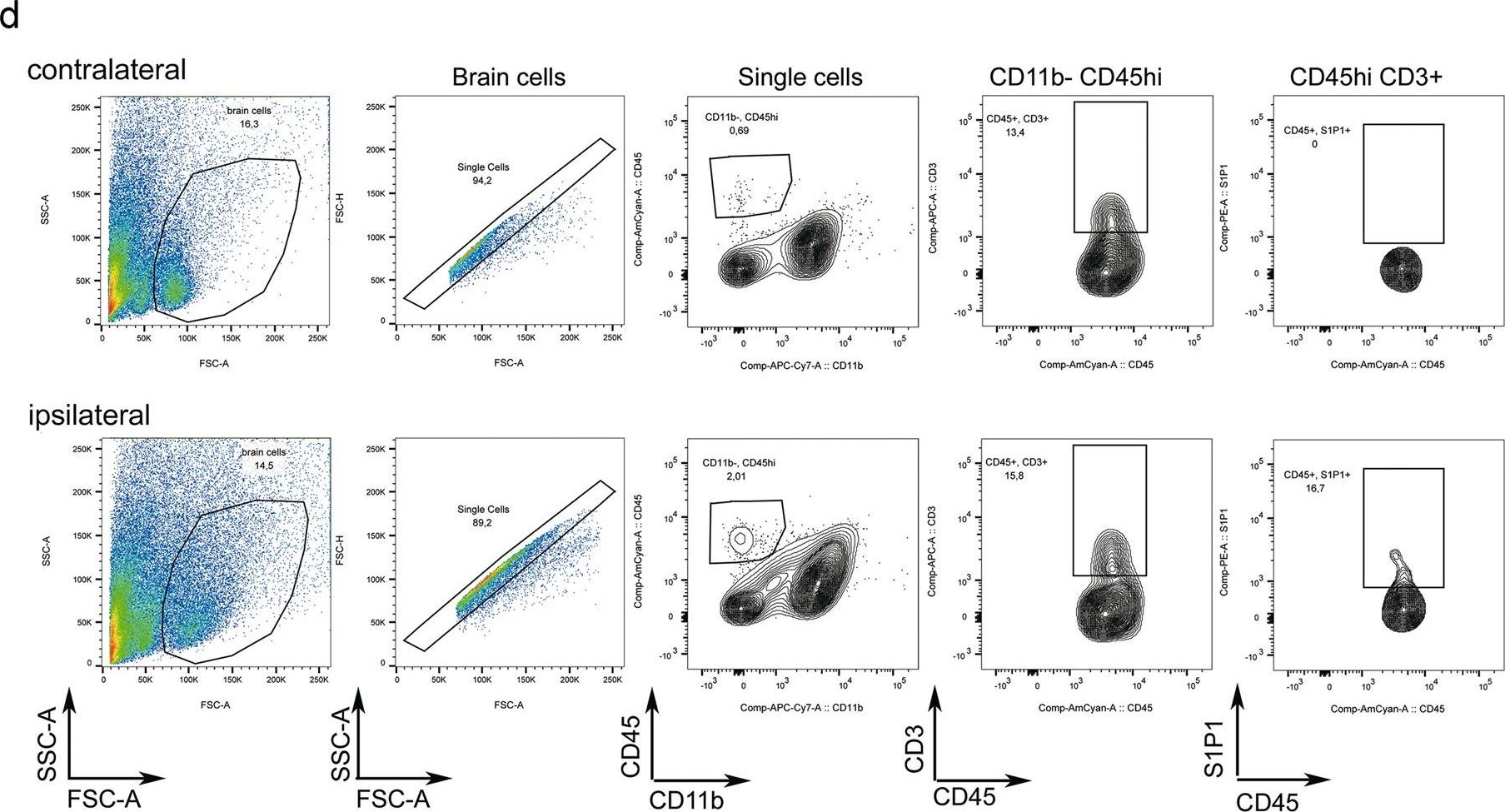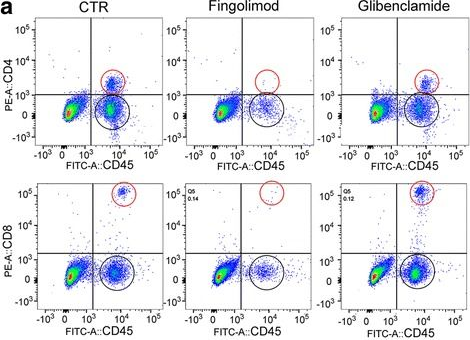Powassan virus (POWV) is a tick-borne flavivirus that causes neurotropic disease in humans. POWV causes fatal encephalitis and meningitis in 10% of human cases and long-term neurological sequelae in 50% of surviving patients. While innate antiviral responses have been extensively studied in mosquito-borne flavivirus infections, they remain less well characterized in the context of tick-borne flaviviruses. In this study, we investigated the role of interferon α/β receptor in the pathogenesis of POWV infection in vivo. Herein, we showed that unlike wild-type (WT) mice, interferon α/β receptor-deficient (Ifnar-/- ) mice were highly susceptible to POWV and rapidly succumbed to infection. Low inoculum dosage resulted in 100% mortality rate in Ifnar-/- mice early after infection. Higher levels of viremia accompanied by increased serum levels of proinflammatory cytokines and chemokines were observed in Ifnar-/- mice. Further, we detected significantly higher virus levels in the peripheral tissues including spleen, liver and kidney in Ifnar-/- mice compared to WT mice. Subsequent analyses revealed marked pathology and elevated inflammatory responses in the peripheral organs of Ifnar-/- mice. Additionally, Ifnar-/- mice showed a stunted immune response in the spleen with significantly decreased numbers of B cells, monocytes, and neutrophils. While WT mice exhibited increased splenic accumulation of Ly6C+ cells, this recruitment was markedly impaired in Ifnar-/- mice. Notably, viral load quantification and immunofluorescence analysis showed no significant difference in brain viral load between WT and Ifnar-/- mice; however, Ifnar-/- mice displayed elevated inflammatory response in the brain. These data suggest that the rapid mortality observed in Ifnar-/- mice is due to uncontrolled virus dissemination and excessive inflammation in the periphery rather than brain infection. Collectively, our data reveal that the type-I interferon response restricts viral tropism and pathogenesis of POWV in mice.
Copyright © 2025 Elsharkawy, Pathak, Dim and Kumar.
Product Citations: 255
In Frontiers in Microbiology on 23 October 2025 by Elsharkawy, A., Pathak, H., et al.
-
FC/FACS
-
Immunology and Microbiology
In Aging and Disease on 22 October 2025 by Arbaizar-Rovirosa, M., Perez, R. F., et al.
Microglial replacement is emerging as a promising concept for treating age-related disorders, but effects on epigenetic age remain unclear. Here, we examined DNA methylation dynamics in microglia from young and old mice and evaluated how ischemic stroke and microglial depletion/repopulation (D/R) influence their epigenetic landscape. Using epigenetic clocks, we confirmed that old microglia display an aged DNA methylation profile, consistent with functional decline. Both stroke and microglial D/R induced an acceleration of epigenetic age, likely reflecting proliferative stress associated with these conditions. However, genome-wide methylation profiling using DNA methylation arrays revealed that microglial repopulation also reversed a large fraction of age-associated DNA methylation changes, particularly within pathways related to immune activation and inflammatory responses. These findings suggest that microglial D/R, though linked to epigenetic age acceleration, leads to the widespread reversal of aging-associated DNA methylation changes, which may help explain the beneficial outcomes observed after microglial replacement. Overall, our results highlight the complexity of interpreting epigenetic age measures and underscore the potential of microglial replacement strategies for brain rejuvenation.
-
FC/FACS
-
Genetics
-
Neuroscience
Iron overload in CD11c+ myeloid cells exacerbates acetaminophen hepatotoxicity.
In Communications Biology on 21 October 2025 by Liu, S., Kanamori, Y., et al.
Acute liver injury often progresses to liver failure, with immune responses playing a critical role in regulating the inflammatory process. In this study, we aim to investigate the effects of iron on CD11c+ myeloid cells during acetaminophen-induced liver injury. Iron overload caused by F-box and leucine-rich repeat protein 5 (FBXL5) deficiency in CD11c+ cells exacerbates liver damage. CD11c+ myeloid cell-specific FBXL5-deficient mice exhibit higher serum transaminase levels, liver injury, and mortality than the controls. These phenotypes are associated with enhanced neutrophil infiltration and expression of interleukin (IL)-6, a pro-inflammatory cytokine. Mechanistically, iron overload in FBXL5-deficient cells increases IL-6 production by facilitating the recruitment of nuclear factor-κB to the Il-6 promoter. In vivo, IL-6 neutralization mitigates liver injury, confirming its role in disease progression. Our findings highlight the role of iron in immune responses and suggest that targeting iron may represent a potential therapeutic strategy for liver injury.
© 2025. The Author(s).
-
FC/FACS
In Nature Communications on 7 October 2025 by Paladini, M. S., Yang, B. A., et al.
Traumatic brain injury (TBI) is an environmental risk factor for dementia and long-term neurological deficits, posing a significant public health challenge. TBI-induced neuroinflammation involves both brain-resident microglia and peripheral monocyte-derived macrophages (MDMs). Previous research has shown that MDMs contribute to the development of long-term memory deficits, yet their long-term behavior following brain infiltration remains unclear. To address this, our study uses two complementary fate-mapping mouse lines, CCR2-creERT2 and Ms4a3-cre, for precise and lasting tracking of MDMs in vivo. Here we show that MDMs persist in the brain for at least 8 months post-TBI in both male and female mice. MDMs retain phagocytic activity for at least 30 days post-TBI, remain transcriptionally distinct from microglia, and display a gene expression profile associated with aging and disease. Moreover, we identify a core transcriptomic signature of MDMs shared across various mouse models and brain perturbations, which is also enriched in the brain myeloid cells of male subjects with TBI and Alzheimer's disease patients. These findings enhance our understanding of MDMs' dynamics after TBI and inform future targeted myeloid-based therapies.
© 2025. The Author(s).
Harnessing an integrated glyco-nanovaccine technology for enhanced cancer immunotherapy.
In Commun Med (Lond) on 29 August 2025 by Niimura, M., Sakamoto, Y., et al.
Cancer immunotherapy, particularly using immune checkpoint inhibitors, has revolutionized cancer treatment; however, its efficacy remains limited to a subset of patients. Nanoparticles have potential in cancer treatment because they offer advantages such as biocompatibility, greater stability, and precise targeting capabilities.
We synthesized an integrated glyco-nanovaccine (iGN) comprising gold nanoparticles conjugated with a synthetic Toll-like receptor 7 (TLR7) ligand, sugar chains, and peptide antigens for cancer immunotherapy. The potential of iGN was investigated using a therapeutic animal model.
In murine models, iGN effectively induces antigen-specific cytotoxic T cells, demonstrating prophylactic and therapeutic efficacy against tumor growth. iGN stimulates antigen-presenting cells via the TLR7-MYD88 pathway, enhancing antigen presentation and priming of cytotoxic T cells. Combination therapy with iGN and anti-PD-1 antibodies improves survival of tumor-bearing mice.
These findings underscore the potential of iGN as a strategy to enhance cancer immunotherapy, particularly when used in combination with immune checkpoint blockade, to bolster anti-tumor immune responses and improve therapeutic outcomes.
© 2025. The Author(s).
-
Cancer Research
-
Immunology and Microbiology
In Sci Rep on 5 June 2019 by Salas-Pérdomo, A., Miro-Mur, F., et al.
Fig.2.D

-
FC/FACS
-
Mus musculus (House mouse)
Collected and cropped from Scientific Reports by CiteAb, provided under a CC-BY license
Image 1 of 2
In J Neuroinflammation on 2 September 2017 by Gerzanich, V., Makar, T. K., et al.
Fig.5.A

-
FC/FACS
-
Mus musculus (House mouse)
Collected and cropped from Journal of Neuroinflammation by CiteAb, provided under a CC-BY license
Image 1 of 2

